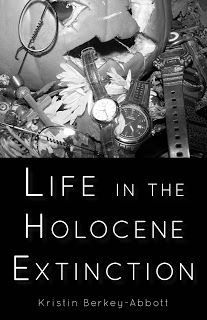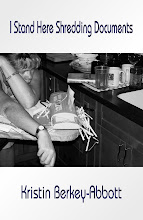I first saw hyperlinked text in 1991, in a graduate school class. We had been reading fairly traditional narratives: novels that were rooted in depictions of the family. It was the best class I've ever taken; we all read the novels, we had rollicking discussions, the novels were very good and female-authored and varied in scope and technique.
But in terms of pointing the way into the future, it was in our final project presentations, not in the novels, that I saw the direction narrative might go.
I'm still not sure how those grad students did it. We trooped down to the computer lab and watched the demonstration. These were the days before Windows took over the world, before we had Internet access on every computer--we used dot matrix printers, for Cripe's sake.
And yet, in this demonstration, I glimpsed all sorts of possibilities. I didn't anticipate every development that has happened; the information gleaning power of the Internet would have blown my pre-Internet brain. But the hypertexting demonstration appealed to the kid in me who loved the books where you made some choices and participated in the narrative process (does the main character do this? go to page 57. Or does the main character do this? Go to page 32).
It has taken longer than I would have expected for this technology to make its way to fiction, but a recent article in The Washington Post says that the future is almost here. Monica Hesse observes, "If readers visit every hyperlink, watch every video and play every game, it is possible for the experience of consuming a single book to become limitless -- a literal neverending story. It's also possible for the user to never read more than a few chapters in sequence, before excitedly scampering over to the next activity. Hybrid books might be the perfect accessory for modern life. They allow immediate shortcuts to information. They feel like instant gratification and guided, packaged experiences."
But does it count as reading? And what impact will these books have on the capacity for imagination of younger generations? The rest of the article talks about these issues.
I've found myself thinking about the possibilities of multiple medias for the way we get poetry out into the world. Various people have already started playing with making videos for individual poems; what would happen if we thought about book-length collections of poems in terms of the multi-media possibilities?
One obvious possibility is that we could hyperlink all sorts of elements that would have once required footnotes. We could have some poems that were short videos and some that weren't--or maybe we give people the option as to whether or not they want traditional poetry presentation (an approximation of words on a page or a performance/reading) or something more experimental. We could hyperlink to other poems that aren't part of the collection. We could hyperlink to earlier drafts of the poem, making life easier for future generations of graduate students who might study our work.
Of course, we might have to wait for technology to catch up with us, which is what happened in 1991. The ideas were there, as my fellow grad students showed, but the technology was still fairly clunky and hard to use, unless you wanted to learn a whole new language of computer coding. Now many of us use platforms like Blogger and website applications.
I wonder what technology is being developed that will make future collections of poetry almost unrecognizable to us, we who are briefly mired back here in this technological time.
Best Essay Collections of 2017 by Women Authors
6 years ago





No comments:
Post a Comment